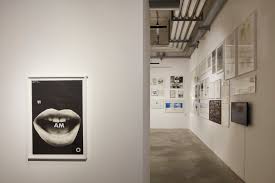‘The Unexpected Subject: 1978 Art and Feminism in Italy’ exhibition opened in Milan

We owe to that fearlessly creative, radical generation of women a debt of admiration and gratitude: Their fights paved the way for our voices to be heard and our rights to be reclaimed and respected today.
Paying homage to that groundbreaking moment, the exhibition “The Unexpected Subject: 1978 Art and Feminism in Italy” opened at the FM Center For Contemporary Art in Milan yesterday.
It’s the first extensive survey on the relationship between feminist movements and visual arts in Italy, taking as catalyst the year 1978, when the political and social upheaval, started internationally almost a decade earlier, reached its local acme. In that year, the Italian Parliament approved the legislation regulating the voluntary interruption of pregnancy, which followed the referendum held in 1974 on divorce, and the approval of the reform of family law in 1975: The fierce fights of women’s organizations and feminist groups radically changed Italian society.
The art world was one of the creative forces fueling the disruption, embracing the practice of female activism, trying to break the patriarchal hold on art, and tackling cultural inequality. The art historian Carla Lonzi is credited as one of the movement’s most influential advocates. In 1970 she founded, together with post-war abstract artist Carla Accardi, a radical group called Rivolta Femminile (Female Revolt), and in 1974 she published the feminist manifesto Sputiamo su Hegel (Let’s Spit on Hegel), in which she deconstructed the patriarchal nature of the German philosopher’s dialectics and his famous “theory of recognition.” Following in her footsteps, in 1978 almost 80 women artists exhibited their works at the Venice Biennale for the first time, claiming their space in a place traditionally very difficult for women to conquer. The exhibition, called “Materialization of Language” and curated by Mirella Bentivoglio, opened to loud criticism. It was snubbed as “Il Ghetto Rosa” (“The Pink Ghetto”).
It’s unfortunately not surprising that the contribution feminists have made to Italian art has been somehow neglected; yet a new critical approach seems finally to give it well deserved attention. In the FM Center For Contemporary Art’s exhibition, curated by Raffaella Perna and Marco Scotini, works from more than 100 artists are now represented, through videos, photographs, words, performances and mixed medias. It makes for a compelling visual feast and a forceful statement on daring self-expression and provocative, yet elegant experimentation.
Among the many remarkable artworks on show, standouts are Ketty La Rocca’s and Lucia Marcucci’s verbo-visual assemblages; the strong black and white imagery by photographers Paola Mattioli, Lisetta Carmi, and Libera Mazzoleni; and Clemen Parrocchetti and Diane Bond’s whimsical, but disturbing soft-art pieces. Rather poignant and intense is also the work of Tomaso Binga, a pseudonym chosen in 1971 by the Roman artist Bianca Pucciarelli to take a strong stance against the art world, where male codes have to be obliged for females to succeed. In her 1976 photographic series Scrittura Vivente (Living Writing), she had herself photographed by her friend Verita Monselles while shaping the alphabet letters with her naked body. Those very same images were chosen by Dior’s artistic director Maria Grazia Chiuri to decorate the pavilion erected in the Musée Rodin’s gardens in Paris for her Fall 2019 collection last month. Binga was invited by the designer to perform one of her spoken-word poems at the event.
Chiuri, a committed feminist since her appointment three years ago at the French house, was instrumental in having Dior sponsoring the exhibition. “Being the first female artistic director at Dior, I had to confront the meaning of being a woman in a male world, to reflect on femininity and on designing for women,” she said. “Not easy questions to answers surely. But women artists with their practice and their inspiring visions help us understand and better ‘read’ ourselves; they definitely encouraged me to think deeply about my role as a woman. I’d like for the new generations to embrace their message of strength. There is still so much to be done and we all have to do something, even if it’s just a little something. Perhaps fashion, with its wide, popular reach, will be able to help get the message across.”
